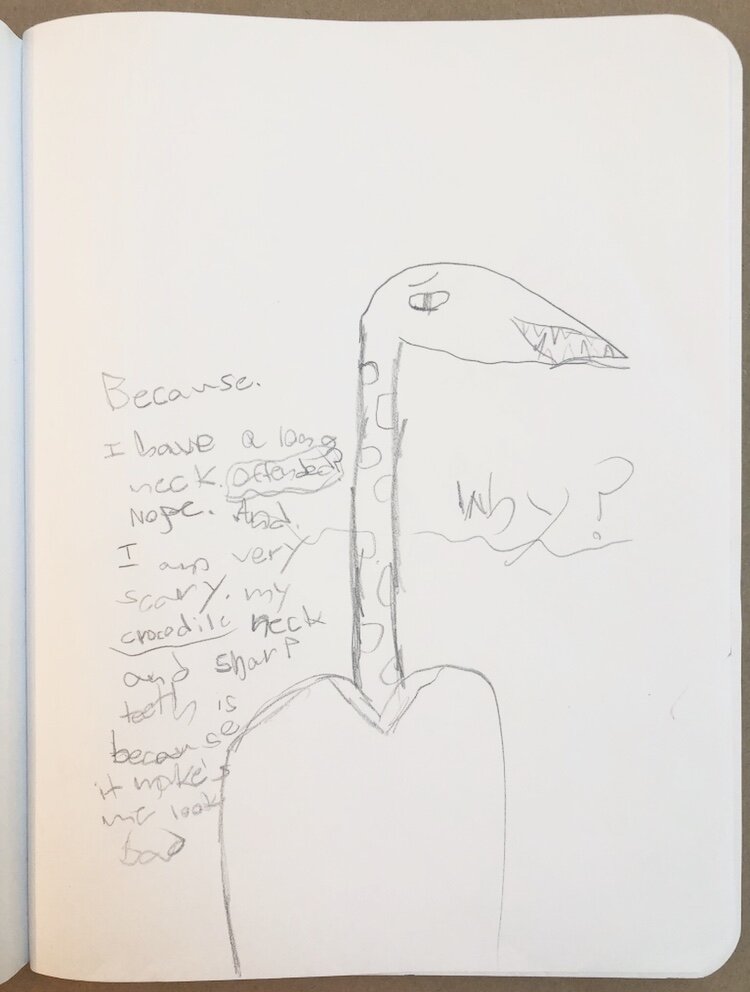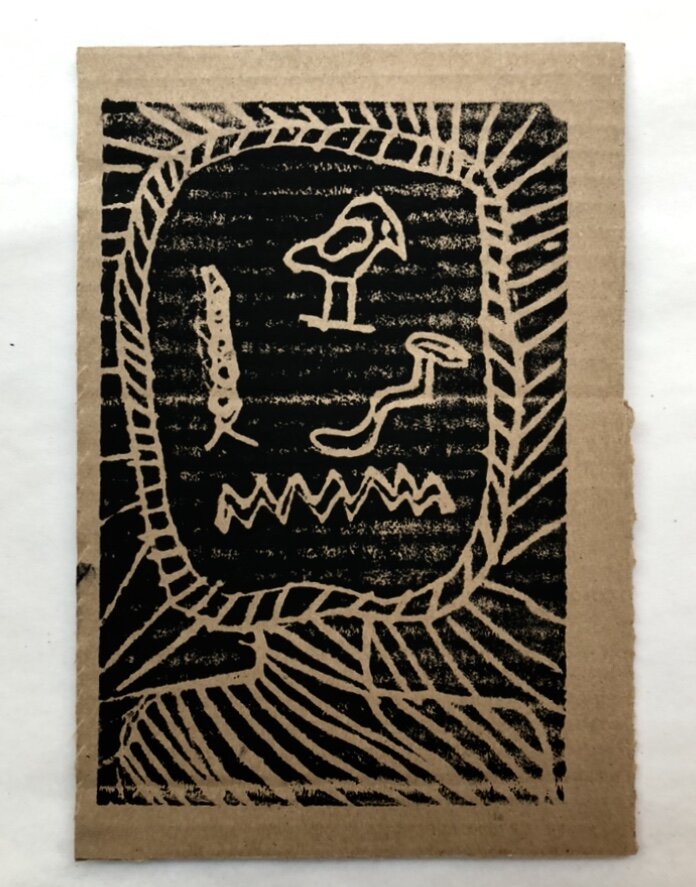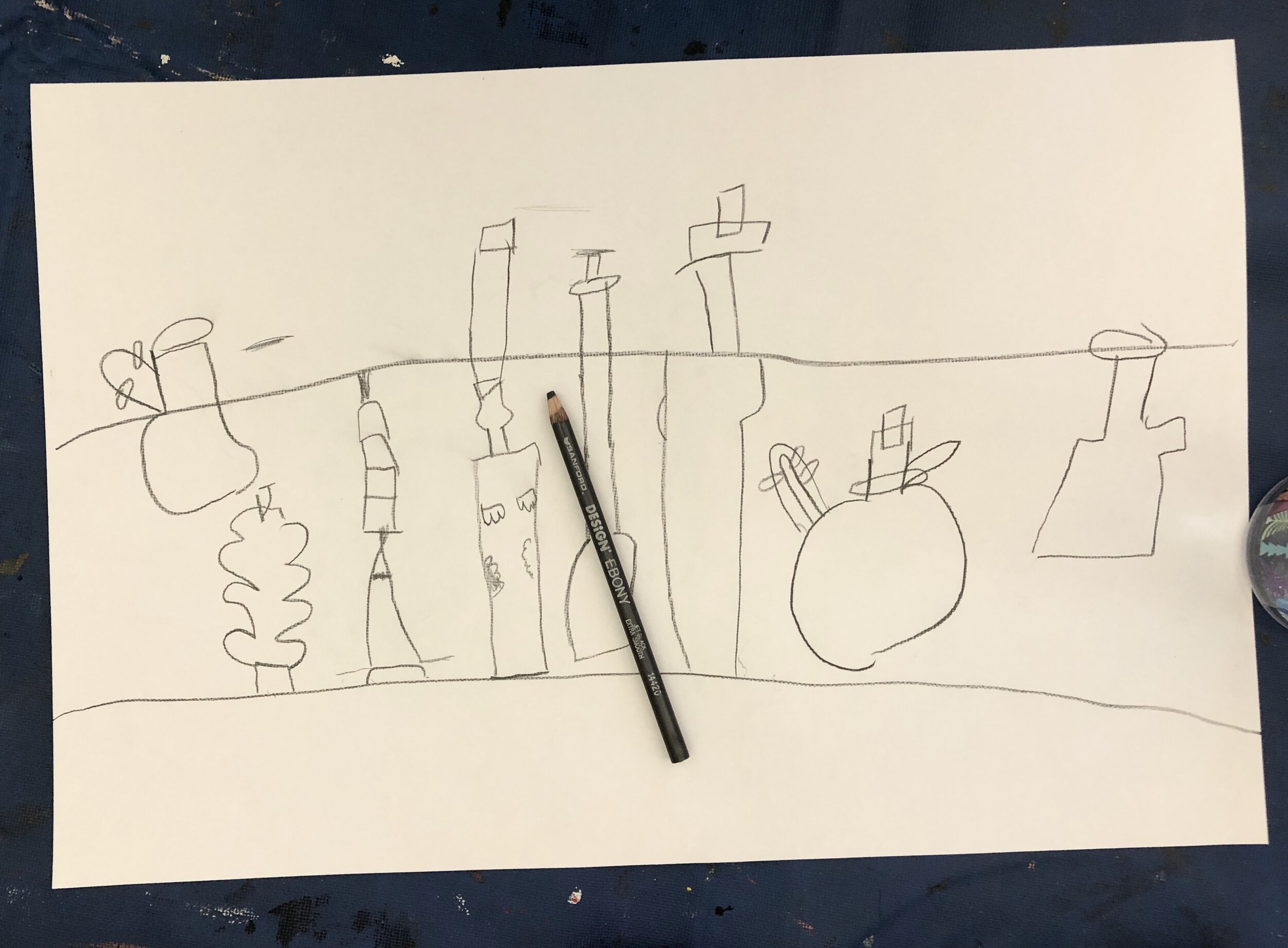ELEMENTARY SCHOOL
Ancient Egypt Unit
A 3rd grade unit based on Ancient Egypt where the students are able to use their imaginations to create animal and human combinations and a cartouche using Egyptian hieroglyphs or their own. See the UNIT PLAN HERE and the three lessons below:
Lesson 1: sketching
Number of periods: 1 • Materials: pencils, sketchbooks and visual references.
Description: Students are introduced to Ancient Egypt through drawing from observing Ancient Egyptian visual references and learn and practice new vocabulary during discussions. They learn how Egyptians used combinations of animals and humans to represent gods. Students then pick an animal and combine it with human characteristics to represent themselves in portraits that show the animals powers or abilities. They are encouraged to state why they pick that animal and the power or ability of the animal that they want to portray.
Lesson 2: drawing
Number of periods: 3 • Materials: pencils, sketchbooks, paper, crayons, markers, rubbing plates and visual references.
Description: Students use the portraits they created in their sketchbooks in lesson 1 and turn them into large drawings. They think about the details that humanize their animal portraits such as clothing, accessories, etc. Students make connections to Ancient Egypt reliefs as they create texture rubbings for their backgrounds. They practice using vocabulary throughout class discussions and shares.
Lesson 3: printmaking
Number of periods: 4 • Materials: pencils, sketchbooks, paper, styrofoam, printing ink, brayers, trays and visual references.
Description: Students add to their knowledge of Ancient Egypt as they learn about hieroglyphs, cartouches and papyrus during discussions and work time. They create their own cartouche with their name or name of their animal in lesson 2. They have the option to use Ancient Egyptian hieroglyphs or come up with their own symbols. After planning their cartouche, they transfer it to styrofoam and print it on different kids of paper. Students make connections to symbols they use in everyday life such as street signs, emojis, etc.
Water color landmarks
Grade: 2nd • Number of periods: 2 • Materials: paper, pencils, erasers, sharpies, watercolor, brushes, containers for water, water and visual references.
Description: Students discuss art historical references and what types of manmade or natural landmarks there are. After sketching their ideas, students will draw their landmarks in pencil and sharpies. They learn to use watercolor and experiment with the medium. Share time allows for class discussion and practice using vocabulary.
MIXED MEDIA SELF PORTRAITS
Grade: 3rd • Number of periods: 2 • Materials: Paper, watercolors, brushes, container, water, bubble wrap, cardboard and other materials for printing, brayers, ink, tray, pencils, colored pencils, eraser, scissors, glue and visual aids.
Description: Students explore mixed media arts as they create self portraits. They create a background which is printed using foam brayers, bubble wrap and other materials. Then they paint a self portrait which they later cut and glue to their backgrounds.
Chalk Pastel Still Life
Grade: 3rd • Number of periods: 2 • Materials: paper, pencils, erasers, chalk pastels, objects and visual references.
Description: After a warm up of observational drawing drills, students engage in class discussions about art historical references of still lifes. They describe and analyze the artwork in terms of color, shapes, positive/ negative space, scale, proportion, etc. Students draw their compositions from real life objects staged in front of them. They experiment using chalk pastels and compare the medium to others they are more familiar with. After share, students reflect on working with a new medium, advantages and possible challenges.































































































































